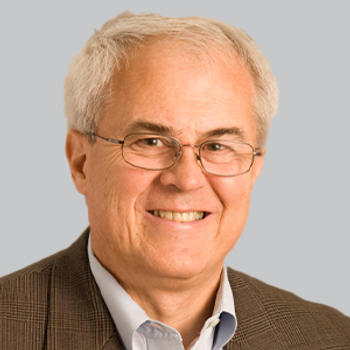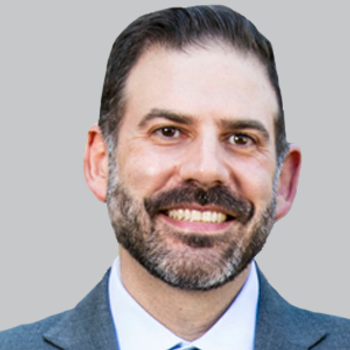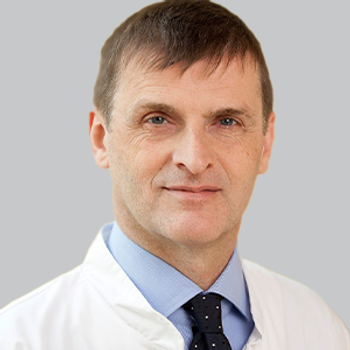
- April 2020
- Volume 3
- Issue 2
Treating Tuberous Sclerosis: A Time to Shine for a Rare Disease
Elizabeth Thiele, MD, PhD, answers a variety of questions on treating tuberous sclerosis, and the landscape of treatments available at this time.
Elizabeth Thiele, MD, PhD
Rare neurological disorders are at the forefront of research now more than ever, with several novel therapies recently coming to market to address symptoms or the root cause of the diseases themselves. Tuberous sclerosis complex (TSC) may soon have its day in the spotlight, as health care providers and patients alike await next steps on a supplemental new drug application submitted to the FDA for Epidiolex (cannabidiol [CBD]; GW Pharmaceuticals). Nobody is closer to that process than Elizabeth A. Thiele, MD, PhD, who led the phase 3 clinical trial examining the safety and efficacy of the purified CBD in patients with the genetic disorder. For more than 15 years, Thiele has served as the director of the Carol and James Herscot Center for Tuberous Sclerosis Complex at Massachusetts General Hospital (MGH), one of the only centers of its kind that serve both children and adults with TSC.
With a multidisciplinary team, Thiele, who is also director of the Pediatric Epilepsy Program at MGH and a professor of neurology at Harvard Medical School, has worked tirelessly to address the whole-body issues that accompany TSC and bring awareness to what is often a misdiagnosed disease.
“As a neurologist, if I take a step back and look at lung involvement [and] look at kidney involvement, what can that help me understand about brain involvement?” Thiele told NeurologyLive®in an interview, in which she reflected on the evolution of the understanding of the disease and what that means for future treatment.
Q: How would you describe the current environment of TSC treatment?
What’s been really exciting in the world of tuberous sclerosis (TS) over the past 15 years is the emergence of mTOR inhibitors as possible treatment for some of the manifestations. They’re being used inconsistently, as no standard approach exists on how to use mTOR inhibitors. But given that we have them for patients with either significant renal involvement or women with LAM [lymph-angioleiomyomatosis] or children who have SEGAs [subependymal giant cell astrocytomas], I think they serve a really important role, and they created a lot of enthusiasm in the world of TS just to have specific FDA approvals for that. There is also a lot of enthusiasm in the TSC patient community over the TS CBD data about whether this would be an effective treatment, and I was pretty excited by the trial results. I think even aside from the trial, it’s going to be a very effective treatment for a lot of people with TS. There’s also some interest in whether CBD modulates mTOR, and some preclinical data show that it can. I don’t know whether that’s clinically significant, but we just submitted a paper that looked at all the patients who were in the expanded-access program for CBD over the years, and we did not see the same clinical effect that we see with the mTOR inhibitors—meaning tumor shrinkage, etcetera, but that’s a very small N, so that’s still unclear. People are starting to take a step back and say, “That’s great. We know what the mTOR inhibitors do. They shrink the tumors, but they don’t make them go away.” Patients have to stay on them long term or for life, and I think a lot of physicians are now considering the mTOR inhibitors as more of a [temporary solution], as patients need to be on them until a more definitive treatment becomes available.
Q: Do any particular therapies in the pipeline look promising to you?
A couple of companies are looking at the possibility of gene therapy. Here at MGH, Xandra Breakefield, PhD, has been thinking about gene therapy and has both TSC1 and TSC2 in adenoviral vectors. The other drug I’m following closely is fenfluramine. Zogenix is doing a basket trial now that’s going to include TS, and I’m very enthusiastic about that because I don’t understand the difference in efficacy between the Dravet trial and the Lennox-Gastaut trial for fenfluramine. But there’s no reason to think that by mechanism of action, fenfluramine should be good specifically for Dravet but not good for other epilepsy syndromes, so I’m excited to see what happens with fenfluramine in TS.
I know that in the TS patient community, a lot of enthusiasm exists regarding Epidiolex and CBD in general. The difference between the TSC trial and the other Epidiolex trials was that the doses were higher, so instead of 10 and 20 mg/kg, it was 25 and 50 mg/kg. From the TSC trial, if you could compare it directly with the other trials for efficacy, we learned there was no dose response curve going up to 50 mg/kg, meaning it didn’t appear as if the 50-mg/kg dose was much more effective than the 20- or 25-mg/kg dose, so that’s important clinical information. What the trial really gave us was a type of safe passage, so to speak, because when any medication comes out, especially in pediatrics, I think we always push the dosing up as tolerated to see whether we get better efficacy at higher doses, especially because many of our medications have come out with very little pediatric data. What I think the TSC trial showed us for Epidiolex, in addition to demonstrating that it’s effective in treating seizures associated with TS, was that even up to doses of 50 mg/kg, the tolerability was still really good. You didn’t see the adverse effects and serious adverse effects skyrocket at those higher doses, and I think that’s important information for physicians who are going to clinically use this in both TSC and other epilepsies.
Q: What challenges have you faced with incorporating or switching your patients to CBD therapy?
What’s different about CBD is that the patient community, I think, is still more educated than the medical community. I think that’s changing, and I think GW has done a good job of trying to educate physicians about not only their product but also cannabinoids and the chemicals in cannabis. I’ve had very few patients over the years come in and tell me more about a medication than I know. Some families read up and know every possible adverse effect of clobazam or know the whole history of drug development or can draw me the chemical structure, but that’s unusual, whereas many patients are kind of aware of cannabinoids, THC, etc. I think interest still exists in the possible “entourage effect,” and we still get questions about whether having some THC or THC acid in addition to CBD provides particular benefits for some patients.
We’ve been lucky in Massachusetts so far that many payers have been reimbursing off-label use—that is, for patients with TSC who don’t have Lennox-Gastaut, but I’m pretty sure I do still have some patients who are taking the different artisanal products. In that case, I would have the same conversation with them that I have with our patients with Dravet and Lennox-Gastaut, looking at pros and cons of their product versus Epidiolex. Most of my patients with epilepsy transitioned to Epidiolex in large part because of cost. I do have a couple of patients who were doing really well on Charlotte’s Web, and the family could afford to keep them on that. So why rock the boat? If they’re seizure free, why would you risk transition? It’s something that may not be as effective for them.
"There's no reason to think by mechanism of action, fenfluramine should be good specifically for Dravet [syndrome] but not good for other epilepsy syndromes, so I'm excited to see what happens with fenfluramine in TS."
Q: What other treatment needs still exist?
Even though it looks as if Epidiolex is effective, and results of the EXIST-3 trial [NCT01713946] of everolimus—even though I’m not that impressed with mTOR inhibitors in epilepsy for TS—were positive, very few patients were seizure free. That continues to be the goal especially because of the relationship with cognitive impairment and autism. The other thing that’s changed in epilepsy and TSC is the use of stereo electroencephalogram. Many programs are now are doing that to approach surgical management of a patient with TS, and many practitioners feel that that is much more effective at localizing the epileptic focus and zone than traditional methods of invasive monitoring. When I started [treating] TS 20 years ago, most experts thought that patients with TS weren’t good surgical candidates because they had more than 1 lesion and they often had more than 1 seizure type. That’s kind of gone the other way now as practitioners realize that if you have a child with TS who hasn’t responded to a couple of medications, you should really consider a surgical option.
Q: Can you describe the behavioral and cognitive comorbidities that affect this population?
I think one of the biggest areas of increased clinical awareness in the TS world over the past 15 years has been the recognition of how incredibly prevalent and significant the neurobehavioral aspects of TS are. And now there’s an acronym, TAND, or “TSC-associated neuropsychiatric disorder,” to emphasize that. Almost all patients living with TSC probably experience some aspects of TAND. When we looked at our patient population retrospectively, about two-thirds had a formal psychiatric diagnosis, and about a third had 2 psychiatric diagnoses. So it’s very prominent. When the Tuberous Sclerosis Alliance polled its constituency a couple of years ago on what were the important things about TS that mattered on a daily basis, the neurobehavioral stuff was at the top with seizures. So I think there’s more research going on now, which is good because honestly, this hadn’t really been characterized. If you talk to families living with TSC, most of them had never been asked about mental health issues, and most people we meet have never received a diagnosis or been treated. In particular, anxiety is really prominent and very common in TS. It predates the [TS] diagnosis, and it’s more than just your typical anxiety; it’s an [obses-sive-compulsive disorder]—type of anxiety in which they get stuck worrying about particular things. Social anxiety is really common. We have some kids who can’t even go to school because the anxiety is so significant that they’re homeschooled. Patients with TS also replay interactions they’ve had with people. As part of the sleep disorder in TS, patients stay up at night replaying interactions that may have occurred that day or may be remote. The anxiety is distinct, and it’s very stereotyped, and we are trying to figure out on a research level, what about it across TSC1 and TSC2—across cognitive levels, across tumor burden—leads to that anxiety. Also, many children and adults who are more impaired with TS will have self-injurious behaviors, and we also have a collection of patients with TS who have savant syndrome. If we can characterize these things in TSC using it as a model, it may help us understand human memory and human behavior better.
Q: How do you address awareness and treatment of these comorbidities?
Treatment of anxiety in TSC is similar to its treatment in the general population. No TSC-specific trials [have evaluated] the TAND features, though I think there’s a lot of interest in doing that. We have found over the years that selective serotonin reuptake inhibitors can be very effective. In fact, a medical student who is now a pediatric epileptologist at the University of California, Los Angeles, had worked with us and referred to Celexa as vitamin C because so many of our patients with TS were on it, and it can be profoundly effective even at low doses. In addition to the psychiatrists, we also have a dedicated neuropsychologist and a social worker for our TS group. Our social worker uses a lot of cognitive behavioral therapy, and we also are using other wellness approaches like meditation. But I don’t think that’s really specific to TS, as we and other practitioners are branching out and using those techniques in patients with epilepsy with these types of comorbidities. I think that the one thing that has evolved in TS with this recognition of TAND is the TAND checklist, which was developed several years ago with help from the Tuberous Sclerosis Alliance. The checklist assesses for TAND so it can be recognized, because in practitioners’ regular visits, they don’t have time to necessarily go through everything. Having that checklist makes it more concrete to health care providers that these issues are very significant for this patient population.
Q: What role do advocacy groups play for a rare disorder like TSC?
I think the advocacy groups are incredibly important for many reasons. For one, for patients living with one of these disorders, it gives them a home, it connects them with people who are following the same path, and that’s incredibly helpful for families. The other thing that the advocacy groups do—and this is true, as well, for the Dravet Syndrome Foundation and the LGS Foundation—is interface very well with the medical community. It builds a new team of medical professionals, scientists, patients, and families that all approach the same question: How do we better understand, treat, and cure this disorder? Being surrounded by people with the same thing is extremely powerful, and I find that for families, it’s an incredible support and advocacy force. The other thing that the advocacy groups do well, especially as these new treatments emerge, is help with infrastructure to identify participants for clinical trials. I think that that was true with the Dravet Syndrome Foundation with both the CBD and fenfluramine trials, as they educate their constituency about these potential treatments. The Tuberous Sclerosis Alliance has funded a huge amount of research, and now with their natural history database and their bio sample repository, I think they’ve become an incredible example for other advocacy groups. They are meeting the needs of their constituency, they are helping to identify care providers for people to turn to, and they are funding research. [More than that, they are] getting people together—both the experts in the field medically and people living with this—to say these are our research focuses and priorities to try to figure out this disease.
Articles in this issue
over 5 years ago
Antisense Therapy Tominersen Holds Promise in Huntington Diseaseover 5 years ago
PARP Pathway May Hold Promise for Parkinson Disease Treatmentover 5 years ago
The Evolving Landscape of Migraine Treatmentover 5 years ago
Neuromodulation Holds Promise in Alzheimer Diseaseover 5 years ago
Building the Foundation for Precision Medicine in EpilepsyNewsletter
Keep your finger on the pulse of neurology—subscribe to NeurologyLive for expert interviews, new data, and breakthrough treatment updates.









































